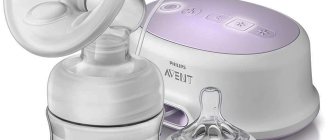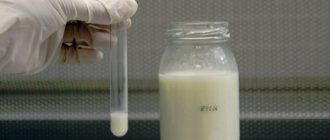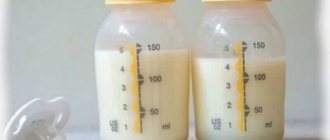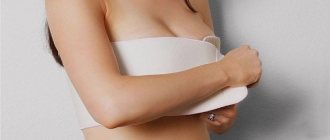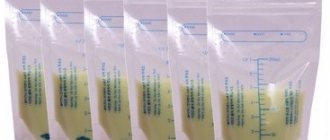When breastfeeding, it is sometimes necessary to remove excess milk from the breast. Knowing how to properly express breast milk by hand in the first days may be required by every young mother, even though it is possible to use a breast pump.
After all, the traditional manual method has a number of advantages.
Why pump your breasts?
There are several reasons why this procedure may become necessary. However, it is important to distinguish truly reasonable situations from those that are far-fetched or whispered by wise grandmothers. Previously it was believed that additional breast stimulation was necessary in the following situations:
- To develop the mammary glands immediately after childbirth. The more milk leaves the breast, the more milk is produced.
- Lactostasis or hypogalactia. In the first case, there is too much milk and it stagnates, so it is better to express it artificially. In the second, this is a way to provoke an increase in milk synthesis in the breast.
- To maintain lactation, additional pumping was used after feeding.
Today, all these reasons are quite doubtful. If the child is completely healthy, he himself is able to stimulate milk production to a sufficient extent, without his mother’s “help.” Congestion in the breasts from excess milk can only be partially resolved by removing excess milk until the mammary glands soften. But if you do this too often, the secret will only increase.
In cases of insufficient breast function, frequent latching of the baby has proven to be much more effective. It is more natural and safer than pumping. Additional pumping of milk after feeding is only relevant when the baby is fed on a schedule and not on demand, since otherwise lactation will gradually fade away.

Of the really important and justified reasons to resort to pumping, the most basic ones can be identified:
- If a baby is born prematurely, he or she is likely to have little or no vital sucking reflex. Sometimes this also occurs in children who were born at term, but have some pathologies in the functioning of the central nervous system. In both cases, the child is able to absorb mother's milk, but is not able to empty the mother's breast. Then the milk is expressed and given to the baby from a pipette or spoon, or less often from a bottle.

- Weak secretion of the mammary glands. This issue is best resolved by frequent breastfeeding. But sometimes even this does not increase lactation. And in this case, pumping is already a necessary measure, so to speak, the last chance to establish normal production of a secretion that is vital for the newborn.
- The beginning of lactation, namely the second or third day, when the breasts swell sharply and milk immediately arrives in large quantities. In this case, the newborn may simply not be able to cope with its volume. In addition, the areola area may become very swollen, and the baby may not be able to physically cope with its resorption. Then you can and even need to express a little milk until the mammary gland and areola soften.
- Severe congestion. Most often they occur in young mothers with large breasts. The baby empties the mammary gland unevenly; he sucks most of the milk from the part of it towards which the chin is facing. Stagnation of milk in other lobes can lead to mastitis, so it is important to knead and empty them through pumping.
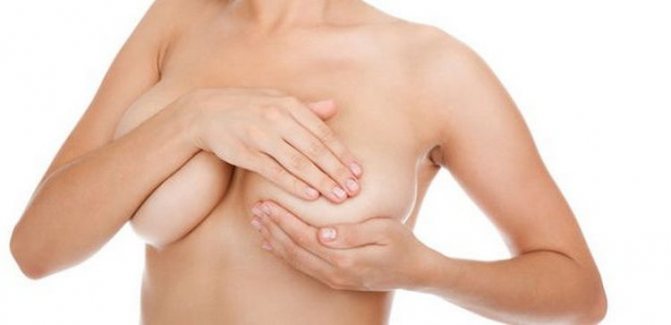
- Taking medications that are contraindicated during breastfeeding. If such drugs are really necessary, the baby temporarily switches to artificial nutrition. But to maintain lactation and resume natural feeding, milk must be expressed and discarded until the end of the course of treatment.
- If there is a lot of milk, the baby eats up, but does not empty the breast completely, this important secret can be stored for the future or as a donor product. In this sense, in addition to pumping techniques, it is important to know the rules for storing such baby food.
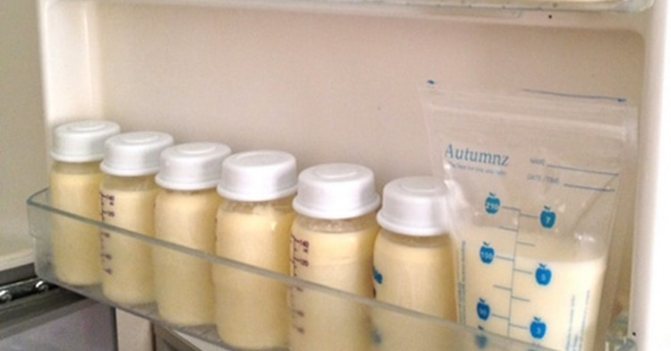
In any case, whether you should express milk or not is up to you to decide. However, in order for the process to be as comfortable and effective as possible, the approach to it must be appropriate.
Preparing to Express Milk
Breastfeeding occurs on its own for the reason that, due to certain factors, the mother’s body produces the necessary hormones, which determine the entire process. Prolactin stimulates the production of secretions by the mammary glands. It begins to be produced in small quantities during pregnancy; childbirth is a catalyst for its active work. Subsequently, its synthesis is stimulated by emptying the breast during feeding.
Oxytocin is constantly produced in the body and is responsible for the contraction of smooth muscles throughout the body. It also determines the process of milk production itself. The baby smells, his skin releases certain pheromones, which, combined with the baby’s action on the nipple, provoke an increased release of oxytocin into the blood. Which, in turn, provokes relaxation of the milk ducts and milk waste.

The pumping process is not natural, it is performed artificially, with your hands, and not with the baby’s mouth. Therefore, in order for it to be successful, it is necessary to prepare the mammary glands as naturally as possible for the process of milk production. And this requires certain conditions:
- Peace and quiet. Irritating factors such as sharp sounds, a spouse running around the house looking for socks, or rushing do not contribute to milk production. Therefore, you need to express in the most calm and comfortable conditions possible.
- Organization of the place. First of all, you should be comfortable, everything you need should be prepared in advance and be at hand.
- Psychological mood. You must be calm and confident, even if everything doesn’t work out the first time. You need to learn how to pump, and not just you. The breasts should also get used to giving up their secretions under the influence of the fingers. Therefore, do not be nervous and methodically repeat all the manipulations; stress will only aggravate the process.

General recommendations
If at first, when feeding, painful engorgement of the nipple occurs, then you can use the technique of Jim Ketterman, an expert in breastfeeding. For the initial outflow of milk, she advises pressing on the nipples very gently: you need to gather all your fingers on the nipple and press gently for about 3 minutes. It is better to use such movements when there is stagnation in the ducts: this will make the breasts softer and pumping painless.
At the beginning of feeding, a young mother may develop such an unpleasant phenomenon as lactostasis, when stagnant milk clogs the milk ducts. If you want to properly empty your breasts during lactostasis, it is better to use the video lessons, because each woman copes with this difficult problem individually.
When there is stagnation in the ducts, a feeling of heaviness and even pain in the chest appears. When the temperature rises, it is better to measure it in both armpits: with a difference in temperature, there really is stagnation.
If there is a significant complication, the breast turns red, swells and even hardens (this is clearly visible in photos on the Internet): the baby does not take such a breast, because it will not be able to dissolve. With such symptoms, you should immediately contact a therapist or even call an ambulance. Sometimes it is easier to use a massage, but use exclusively manual influence.
The technique of hand expression can only be mastered through practice and personal experience. If you need to learn this urgently, a special service for expressing breast milk will help. Specialists will give a lesson or consultation by phone or online. One of the most famous is La Leche League, which provides free consultations on breastfeeding: how to attach to the breast, how to feed, how to store expressed milk. Experts believe that proper breast emptying not only helps solve problems with lactation, but also prevents the development of mastitis and subsequent mastopathy.
READ ALSO: How to properly breastfeed a baby?
How to get your milk flowing
In order for your efforts to have results, the process of milk formation and milk release will have to be started without the participation of its natural catalyst - the baby. There are certain techniques that ensure the so-called flow of milk. Each woman has her own tricks in this regard, but until you decide on the best method specifically for you, you can use the most common techniques:
- Take a warm shower or simply apply a towel soaked in warm water to your breasts.
- Drink your favorite drink (such as tea). It doesn’t matter what you drink, the main thing is that it does not violate the principles of nutrition during breastfeeding, and that the liquid is warm.
- Give a light and pleasant massage to your chest, as if kneading it. Movements should be smooth, soft and not cause discomfort.
- Bend down and stand for a while so that the milk flows due to the force of gravity.
When following any recommendation, it is important to think about your baby, remember his touch, smell. Ideally, express in close proximity to the baby. For example, if a baby is suckling on one breast, the flow of milk into the second is guaranteed, you can express it simultaneously with feeding, and almost completely.
If it is not possible to be in close proximity to the baby, the baby’s things will come to your aid. The baby's smell starts the process of milk production better than any tricks or tricks. Just smell the baby’s underwear, ideally the hat that the baby has been wearing for a couple of hours. This will be enough to make the streams of secretion from your mammary gland stand out more cheerfully under the influence of your fingers.

Preparatory procedures
Milk in a woman’s body is produced under the direct influence of two hormones. Scientists have been able to prove that neither drinking nor nutrition can radically affect this process. It is their impact that needs to be dealt with first:
- Oxytocin begins to be actively produced only if information about the “stimulus” has previously been transmitted to the brain. The substance is produced by regular application
of crumbs. Mommy additionally receives not only stimulation of the glands, but also the feeling of the presence of her baby. - Only prolactin can take control of milk secretions. He counts all the material spent and returns the same amount in its place. That is why during one meal the baby must completely empty
one breast.
You need to think about how to strain breast milk only after all the necessary hormones have entered the blood. This will require a number of preparatory measures.
Important! What is lactostasis in a nursing mother: symptoms and treatment
Before quickly expressing breast milk by hand, you need to prepare well.
to this process breast:
- of warm towels
has a positive effect . They should first be soaked in water. If this is not possible, then a stream of warm water or a shower will be quite enough. - Mommy should also drink enough warm liquid. It is allowed to use tea or a fruit drink.
- Before starting the procedure, it is recommended to thoroughly massage
each of the mammary glands. - Regular downward bending of the body helps to improve milk flow.
Women wonder how to understand that they can start pumping? Before the event begins, you should remember about the baby. Psychologists even recommend a network nearby. Thanks to this, you will be able to feel the flow of milk into your breasts.
Important! Where and how to store breast milk after pumping
Pumping will go much faster if you put your baby on the other breast.
. The technique is very popular. Thanks to her, it is possible to obtain milk secretion from two places at once.
How to express breasts with your hands - step-by-step instructions
We've sorted out the preparatory stage, about half of the work remains - learning how to properly apply pressure to the chest with your fingers. It’s worth noting right away that you, excuse me, are not a cow, and you are not accustomed to “milking”. It is genetically determined in your body that the baby should suck the milk. Therefore, even with the perfect technique, everything will not work out right away; the breast must learn to let go of milk. Do not give up under any circumstances, even if at the end of the first session you do not achieve much. Everything comes with experience, the mammary gland will learn to respond correctly to your efforts, just follow the instructions step by step:
- Find a comfortable position; more often than not, women express while sitting. The milk cup should be at chest level. Try to sit up straight; when your body is tilted forward, your muscles quickly become stiff.
- With one hand, support the mammary gland from below, with the other, make several stroking movements towards the nipple, as if “driving” the milk in this direction.
- Place your thumb on the border of the skin and areola from above, and your index finger in the same manner from below. These are your two working fingers, they form the letter “C” in the correct position. The remaining fingers support the chest.
- The thumb and index finger are pressed into the chest towards the rib cage, then, as if brought together in a ring, pressing on the areola. In this case, the working fingers are strictly on the border of the areola and the skin, without moving anywhere. This way you affect the milk ducts under the areola, which is ultimately what we need.
- Repeat these movements carefully and rhythmically. If this hurts you, then you need to stop and understand what you are doing wrong. In order to evenly express all parts of the breast, move your working fingers around the areola. But they must be parallel to each other and be clearly on the border with the skin.
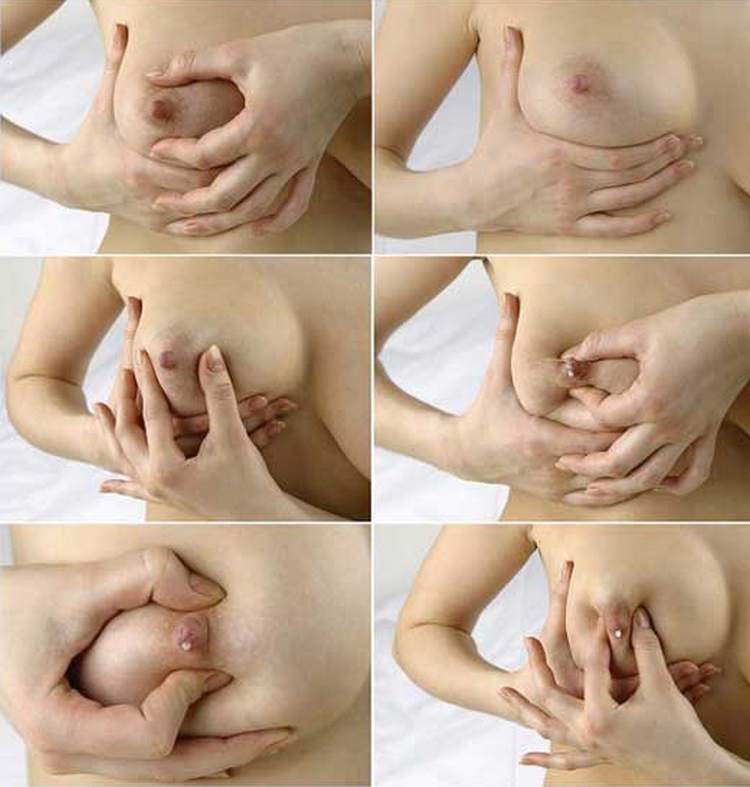
These are instructions for pumping using the Marmet system. But there are other ways:
- Warm bottle. Heat a glass bottle with a neck with a diameter of 4 centimeters in hot water, and cool the neck itself. Lubricate the areola with Vaseline and apply the prepared bottle to it. The nipple will retract and the milk will flow under the influence of the resulting vacuum. When the trickle of secretion becomes very weak, the bottle is removed.
- Breast pump. There are a great many of them now, but the principle of operation is the same - milk comes out under the influence of a vacuum. The vacuum itself is created either manually or by an automatic machine.

The first option is suitable if the nipple is overstrained and the breast is inflamed. The bottle will relax the milk ducts under the areola a little, and you will be able to express. The second option saves energy and time for the mother if pumping must be done almost constantly.
Physiotherapeutic treatment
Ultrasound therapy and other interventions can alleviate the condition, but are only auxiliary means of treatment. Physiotherapeutic procedures are not recommended, in particular, when the temperature rises above 38 ° C and the formation of an acute purulent process. Therefore, before physiotherapeutic treatment, it is advisable to undergo an ultrasound scan from a competent specialist with experience working with lactating women. The most common treatment is with ultrasound (UT), which acts using thermal, mechanical and physico-chemical factors - it increases the temperature in the tissues affected, activates metabolic processes, and promotes the release of biologically active substances.
With lactostasis, such consequences are not always useful. Some services offering medical assistance for lactostasis and mastitis advertise physiotherapy at home at the first visit, while a small number of women actually need this service. In addition, if adequate recommendations are followed correctly and consistently, no additional treatment is required. Physiotherapeutic effects are not indifferent to the body and must be carried out by a certified specialist licensed for this type of activity. Certificates and licenses are issued only by state accredited bodies.
Important points
- Do not hesitate to press on the mammary gland; this should be done gently, without pain, but confidently. If the technique is performed correctly, the secretion will come out in trickles.
- The entire procedure cannot take less than five minutes for one breast. Then you should move on to the second one. As a result, a normal and full session should last about half an hour. Do not rush under any circumstances, the mammary gland must have time to give up its secretion.
- In the process, the skin will be moisturized with your own milk, and your fingers will begin to slip. But we absolutely do not need this. So keep a cotton towel handy. Rub your fingers and breasts with it from time to time, continuing the process.
- You need to empty your breasts of milk until you feel relief. It is unlikely that you will be able to do this completely - milk is synthesized constantly. In addition, influencing the breasts little by little, but often, is much more effective, especially in matters of how to increase lactation.
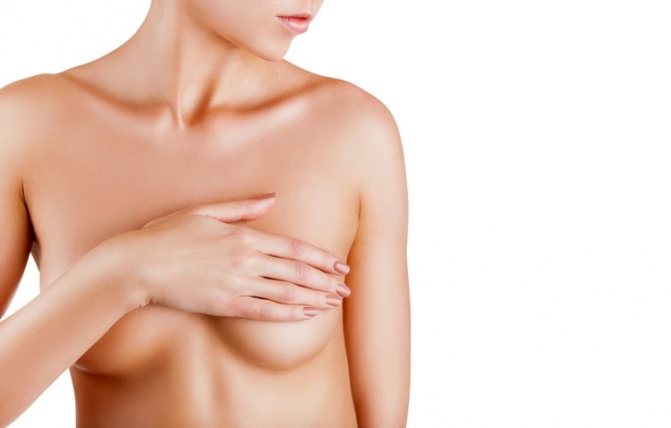
If the procedure is painful and does not bring results, most likely you are doing something wrong.
If you can’t master the technique on your own, the best solution would be to contact a specialist in the field of breastfeeding. You can find one at the antenatal clinic where you were registered during pregnancy. He will show and tell, and together with you he will find out what exactly is not working for you.
Using a warm bottle
If the nipple constantly suffers from increased tension,
This increases the risk of developing breast inflammation. Given this negative situation, it can be very difficult to express milk into a bottle.
This is interesting! What is colostrum during pregnancy: at what stage is it released?
To relieve tension, the hand straining technique is used. Stimulation can also be performed through the baby's mouth. To speed up the process, it is recommended to use a bottle of warm water. Its width at the top should be at least 4 centimeters. Boiled water is used for heating. After performing the manipulations, you need to cool the vessel slightly.

lubricated with Vaseline.
Due to the temperature difference, the end of the breast will be pulled inward.
This process will speed up the flow. Although the streams will be weak, you will be able to get the required amount of liquid for feeding.
Additionally, it should be noted that with constant pumping into a bottle, certain areas of the breast become rough.
In this case, it is difficult to separate the first few drops of milk from them.
Pumping can only be done if the fingers are close to each other. The process will be less painful if it is done in no more than five minutes.
How long can expressed breast milk be stored?
If all the problems are eliminated, and you are able to express milk, provided that it is suitable for the child, the question immediately arises of how to store this secret as efficiently as possible:
- Up to 8 hours. In a sterile, closed bottle at room temperature (no more than 20-23°C).
- Up to 48 hours. Under the same conditions of sterility and closed containers, milk can stand in the refrigerator at a temperature of no more than +8°C for up to two days. But it’s still better to use it in one day. Before feeding, this milk must be warmed to 37-38°C. But once heated, it can no longer be stored again.
- Up to 4 months. Under the same container conditions, the secretion can be frozen. It is better to do this in “one-time” portions. Because defrosted and heated soldering can no longer be stored.
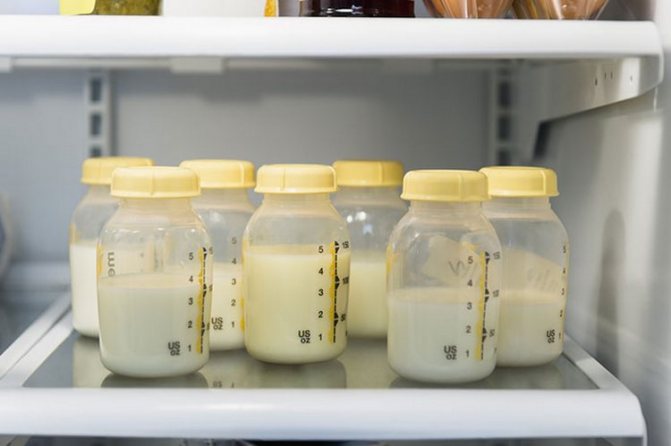
Using expressed milk
In addition to the questions of whether you need to express after each feeding, and how to do it correctly, there are many others. Let's answer the main ones.
- Do I need to sterilize the container? This must be done to protect the child from the risk of intestinal infections. It is safest to use disposable plastic bags, which do not need to be prepared for use.
- Which container is best to “pour” into? Polycarbonate transparent bottles are common in everyday life. They are light, do not break, and are easy to wash. This “container” is dangerous for children! During the boiling process, it releases the toxic substance bisphenol, which tends to accumulate in the body. In the future, it causes diseases and deviations in the development of the nervous and genitourinary systems. In a number of European countries, polycarbonate baby bottles are prohibited from sale. Glassware is safer, but the fatty acids in breast milk settle on the glass, resulting in a less valuable product for the baby. Therefore, it is better to use containers marked with % BpA or Bisphenol A free. They are easy to use and do not contain dangerous bisphenol.
- Where to store? The newly received product can be immediately offered to the child. It can be kept at room temperature for up to two hours without risk due to its high content of antibacterial factors. Long-term storage is allowed in the refrigerator (up to 7 days) and in the freezer (up to 6 months).
- How to use? Refrigerated or frozen food should be reheated. To do this, use a water bath or a stream of hot water. The container should be shaken periodically so that the heat is distributed evenly in it. Warm the milk to body temperature. When you drop it on your wrist, you should not feel cold or warm.
Do not heat breast milk in the microwave! Microwaves destroy active immune factors and reduce the quality of baby food. In addition, there is a risk of too hot “areas” in the container and burns to the delicate surface of the baby’s mouth.
Only practice and personal experience will help you master the technique of hand expression. When you need to learn quickly, a breast milk pumping service can help. Its specialists help nursing mothers at home or with consultations online or by phone. Free consultations are provided by reputable breastfeeding organizations, such as La Leche League
In their opinion, using the correct technique of manual expression according to indications allows you to solve lactation problems, so it is important for every woman to know its features
Video: how to properly express breast milk by hand
In this video, a specialist explains in detail and clearly shows how to properly express breast milk by hand. The entire preparatory process is also described in great detail.
The process of recovery after childbirth is accompanied by various troubles, including the formation of lactation. Not everything always goes as the book says; sometimes, due to a number of indicators, the mother has to manually empty the breasts of excess milk, or stimulate them to maintain lactation. Regardless of the reasons, it is very important to learn how to properly express breast milk by hand. It’s difficult only at the very beginning, then it’s just a matter of habit that brings relief.
Do you know how to express breast milk by hand? Why did you need this skill? Share your experience in the comments, it will help less experienced parents. I wish you healthy babies and stable lactation!
Methods
Expressing breast milk can be done in different ways. It completely depends on your habits and desires. Each technique has both pros and cons. But breast milk itself, no matter how you express it, does not change or spoil.
Breast pump
To begin, sterilize all components of the device by hand. When you rinse them thoroughly, you need to make sure that there are no milk residues from the previous time. Follow the instructions carefully. If you don’t understand something, you can find a video where everything is shown in great detail.
When finished, wash all ingredients. Store those that have come into contact with milk in the refrigerator just in case.
This device works quite quickly and accurately, but many do not trust it, since it was developed quite recently. It is advisable not to buy a breast pump from an unknown brand. It would be nice if someone you know used something similar and could guarantee the quality. Be sure to read reviews before purchasing.
https://youtube.com/watch?v=0wVVG3KLCJs
Warm bottle
This technique was used by our grandmothers. You need to heat the bottle and cool the neck slightly. Place the bottle on your chest with your hands and wait. Gradually, the air inside will begin to cool, slightly sucking the nipple inward, and the milk will slowly flow.
The plus is that this technique is completely safe, and there is no room for error. The downside is that it takes quite a long time to work. You cannot take the bottle away from your chest, because then the air will come out of it, and you will have to start all over again.
Manually
Before you start expressing with your hands, wash them thoroughly and lightly massage your breasts. With one hand, grab it from below and press lightly from the base to the nipple. Don't press hard, just push the milk through
Then with the other hand you need to gently press on the edge of the nipple on both sides. Make sure it doesn't hurt
If you are doing this for the first time, it is better to look for a video and watch carefully what to do. Follow each step shown at first. Over time, you will remember what is being done in the video and get used to expressing everything yourself.
